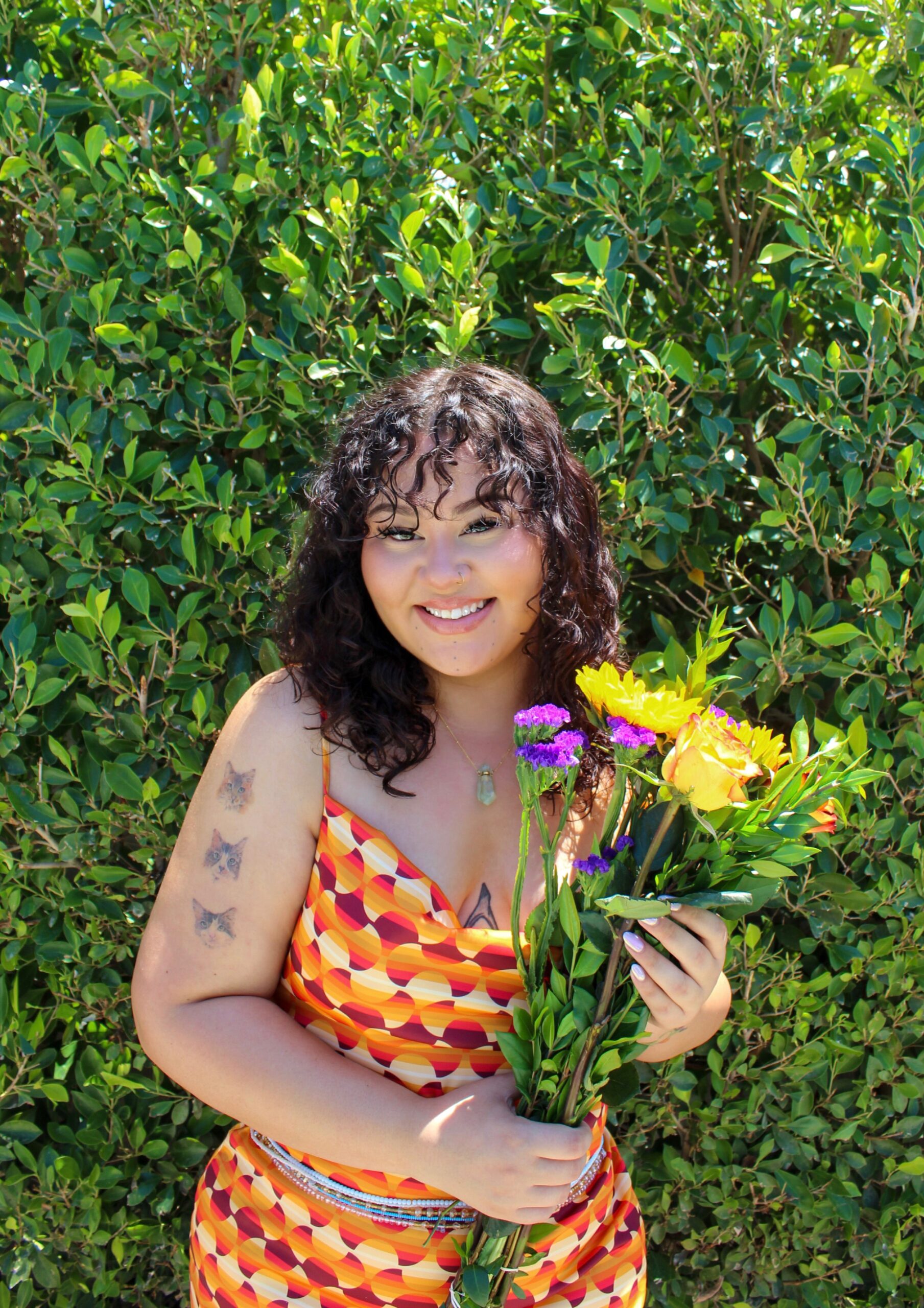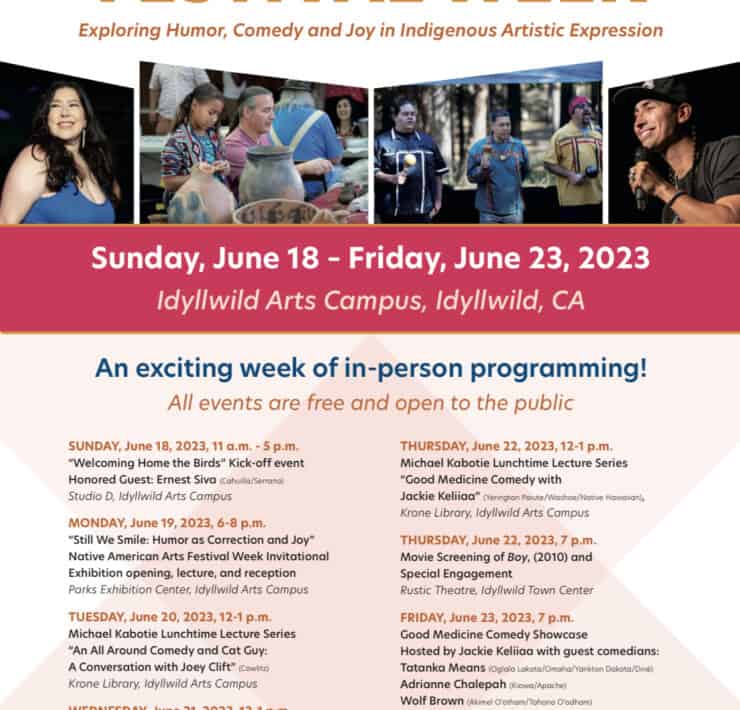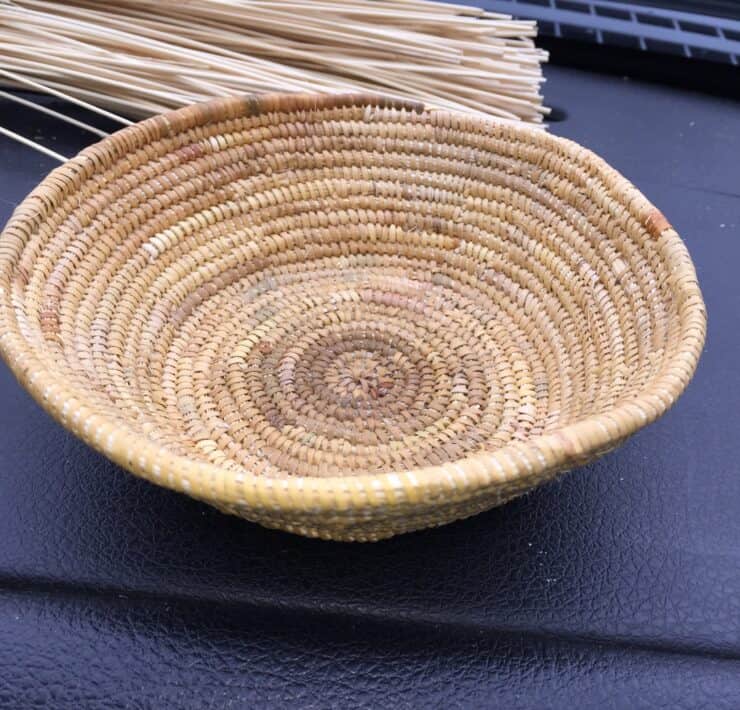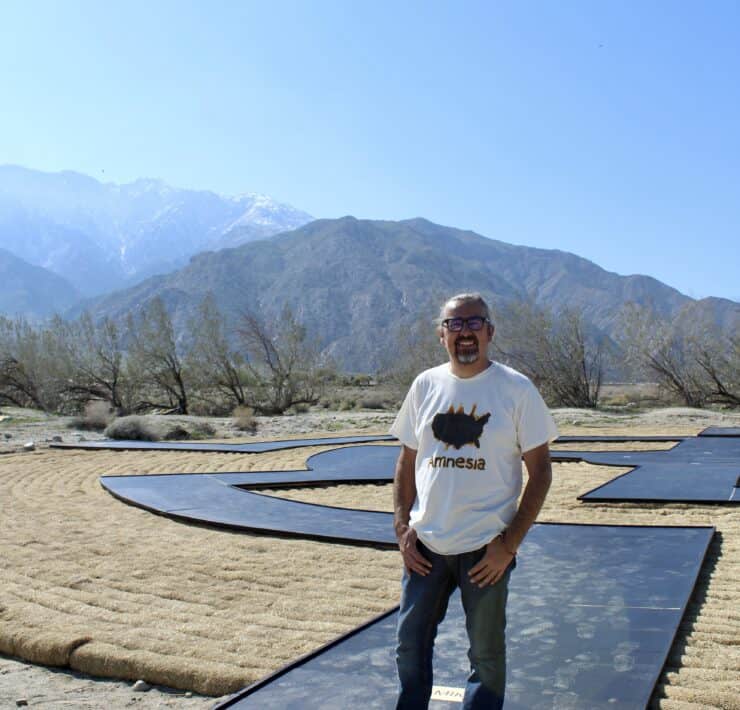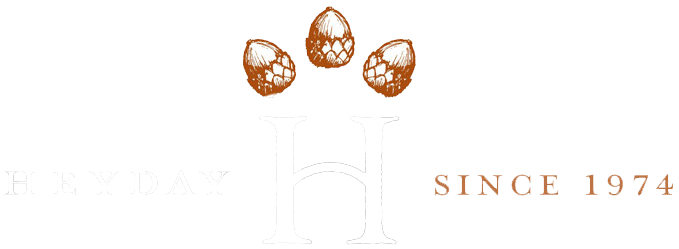
By Emily Clarke
As Native people, many of us have walked through a museum staring at important cultural items from our own tribes as they are displayed inside glass boxes. Many of us do not have access to our own family heirlooms because our ancestors were forced to sell them in order to survive, and sometimes, those items end up in museums for the general public to learn from. Although those museums are prioritizing education, they are forgetting about the real people who these items came from and belong to. Dr. Meranda Roberts (Numu / Xicana) works to heal relationships between museums and Native people as well as to curate Native American collections in a conscious way. Recently, Dr. Roberts began working with a collection of Cahuilla basketry at the Benton Museum of Art at Pomona College. The two of us met at Idyllwild Arts Academy during Native American Arts week, but have had connections through mutual colleagues and the UC Riverside community for years. Dr. Roberts agreed to sit down with me and discuss her work thus far as well as the plan for the Benton’s collection of precious Cahuilla basketry.
Who are you? What do you do?
My name is Dr. Meranda Roberts and I’m a citizen of the Yerington Paiute tribe as well as Xicana. I graduated from the University of California Riverside in 2018 with a doctorate in History with an emphasis on Native Studies. My Doctorate focused on four different basket weavers, one from the Great Basin, one from Northern California, and two Cahuilla weavers. I wrote about how they maintained their basket weaving tradition despite the things that have happened to their communities. I worked at the Field Museum of Natural History in Chicago for four years revamping their seventy year old Native American hall. Now, I am currently working at Benton Museum of Art (Pomona College) as a consultant for their Native American collection. I am also the curator for a new exhibit called “Continuity: Cahuilla Basket Weavers and their Legacies.” My involvement with the Benton started in 2020 when their director, Victoria Sancho Lobis, contacted me to work with their basket collection and to help the museum reach out to different Native communities whose items are housed at the museum.
What event recently took place at the Benton Art Museum and what was its significance?
On July 16th, the Benton Art Museum hosted an event for Native basket weavers in the region. The call for those basket weavers went out to the various Cahuilla bands through community members Lorene Sisquoc and Rose Ann Hamilton, with the intention of inviting weavers to interact with the collection of Cahuilla basketry that the Betnon has from the 1900s. What makes this particular collection so unique is that the collector, Emil Steffa, actually documented the names of the basket weavers he bought from and in some cases took their photographs; at the time anthropologists were not doing this sort of due diligence as much as they should have. Steffa was a graduate of Pomona College who fell in love with Cahuilla basketry while conducting research in the Coachella Valley and when he died, his collection went to the Benton.
The event on July 16th was something I felt was needed for the museum to do because it is their institutional responsibility to ensure that baskets could be reunited with their living descendants. When I was approached to curate an exhibition that featured these baskets I knew I could not do so without involving the community and explaining my processes. I understand my role as a curator to be sort of like a facilitator, where I help the institution understand the needs of Native communities. So, the event was really about the museum putting out word that they have these baskets and that they’re accessible. It was also a first step in building relationships with the descendants so that we can work in tandem in honoring ancestors and in creating a story that exemplifies how Cahuilla People have always been here and always will be.
The event included Cahuilla Bird Singers, a basket weaving workshop, and we took people into the collection space to touch and hold the baskets. . I felt an enormous amount of gratitude at the end of the day when we invited Bird Singers into the collection to sing to the baskets. It was a really moving event for me, but also important for the museum staff to experience because I wanted them to recognize that these items remain deeply connected to their community in ways that not everyone always understands. Baskets are the embodiment of ancestral love and I think that event helped the staff who were present fully appreciate that concept and reality.
I’ve worked with Lorene and Rose Ann a lot, and there’s actually a chapter in my dissertation about Lorene’s work and life; which I helped curate into an exhibition that is currently on display at the Field Museum. So, when I got asked to do this work at the Benton, I knew I had to include both of these women, and I knew that they could provide the best guidance on how to best represent these communities. All three of us decided that it was our responsibility to reunite the baskets with their families. For me, having had previous experiences, that kind of reunification within a museum space is extremely important. I think oftentimes the people who run museums see these cultural items as dormant. But they’re part of the community. And for everyone to share their cultural and ancestral experiences with the baskets makes them realize that these items have homes.

Why focus on Cahuilla basketry for curation?
I didn’t intend to start discussing basketry as a whole when I wrote my dissertation, but I found that a lot of museums with basketry collections have Cahuilla basketry. In these spaces, people don’t know how to show these items as something other than aesthetically beautiful. When I work with baskets, I look at the community they came from, the process it took to make them, and the spiritual aspects of the baskets as well. I feel that because Cahuilla people have shared so much with me and because I’ve been living on their land, it’s my responsibility to help bring their stories of survivance to the forefront. Cahuilla people have always been kind to me, and I learn a lot from them because they are so giving and open.
What are you hoping is accomplished with this exhibition and collaboration?
The exhibition focuses on the institutional responsibility the museum has in working well with Native communities, and on how Cahuilla People are not going anywhere. In his work, Emil Steffa admiringly wrote about Native people but he also wrote about how we would one day disappear. I want to show how he was wrong by displaying the “historic” pieces alongside more contemporary creations. My idea is to have a circle of baskets and in the middle of them there will be work by contemporary Native artists to show the circle of continuity. After this, there should be no excuse for people to say that they don’t know how to work with Native communities. We’re also planning on creating some sort of publication alongside the exhibit. After talking to some Pomona professors, I realized there’s been conversations between the institution and the surrounding Native communities. So I want to bring out those stories and emphasize the fact that Cahuilla people have been encouraging doing things the right way for a long time. I hope to do this by paying homage to Donna Largo because I realize a lot of this wouldn’t be possible without her or her leadership in sustaining Cahuilla basket weaving.
The exhibition is coming in 2024. I’m currently working on drawing up the plans. I really want to be deliberate throughout this process. Right now it’s in the process of being figured out, but the event on July 16th was really the opening door. I want everyone to be able to learn from it. I really hope that people will realize that curating Native cultural items and art is possible without being appropriative or disrespectful. It’s also possible to create relationships with institutions by building trust. Many Native people don’t feel seen within a museum space and I want to change that while also encouraging the institutions to involve the community within the work they are doing.
What is the plan for the basket collection in the future?
The plan for the basket collection is something Victoria and I are constantly discussing and thinking about.. We are constantly discussing how repatriation goes beyond NAGPRA. I know a lot of us want to see these items go home immediately, but rematriation takes a lot of time and patience because extreme care must be taken throughout the process. I want people to know that what they are asking for is being heard and I am not taking that lightly. As much as I am a curator, I am also an advocate for Native People in these spaces. I am hoping that this exhibition, and the way we are doing it, is the first of many steps in establishing the foundation for a future we all want to see. . I don’t ever feel comfortable as a Northern Paiute woman talking about another community, so I wanted to use this as an example for how to create a community within a community.
How can those who were unable to attend the event get in touch about viewing the collection and possibly the exhibition?
Anyone who wants to be able to spend time with the basket collection or get more information can email the Associate Director/Registrar of the Museum, Steven Comba at Steven.Comba@pomona.edu. Or, If you would like to reach out to me to find out more information, please feel free to email me at mrobe006@gmail.com.

